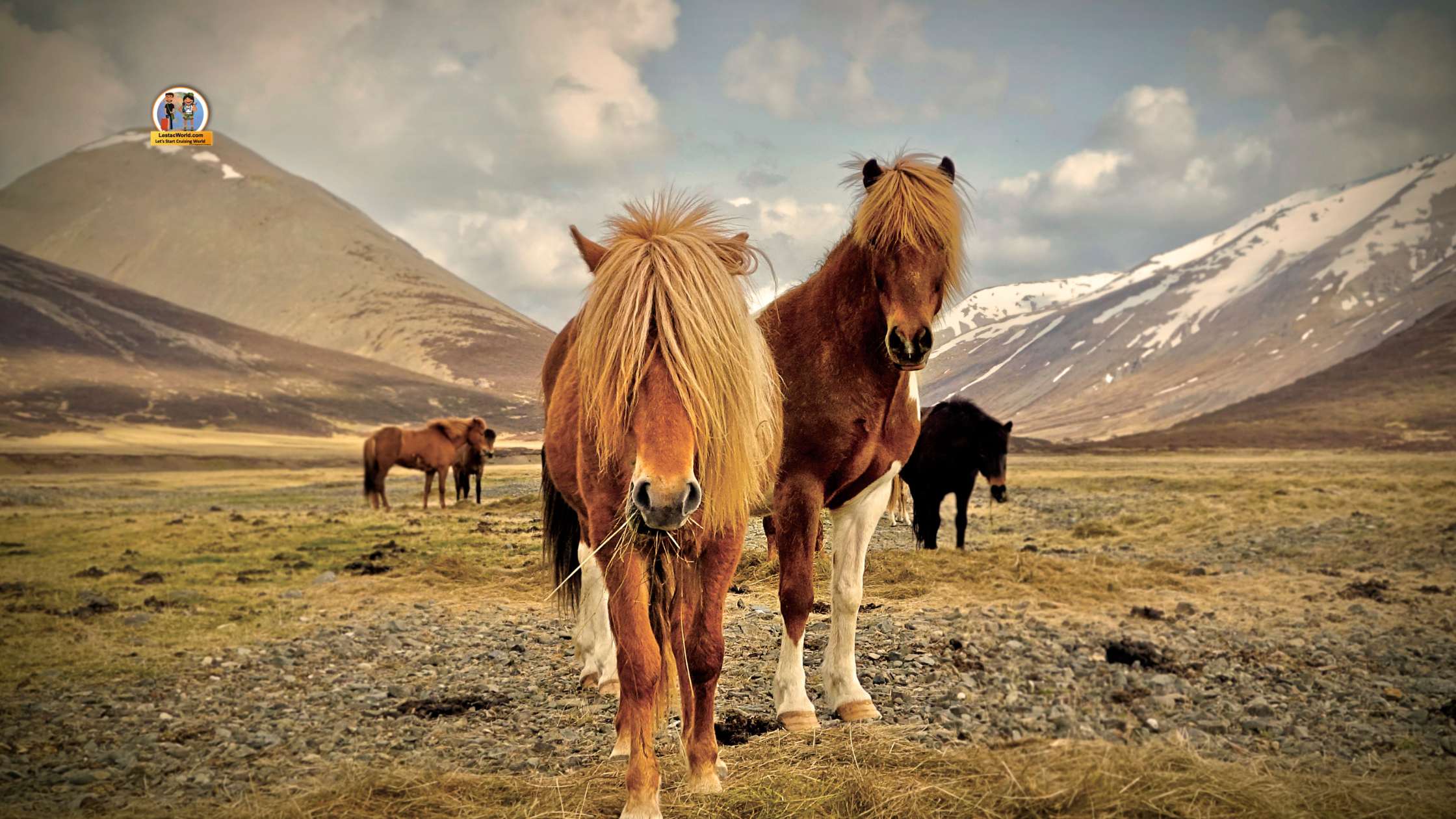Is July the right time to visit Iceland ?
Is July the right time to visit Iceland? July is an excellent time to visit Iceland, offering a blend of favorable weather, extended daylight, and a range of outdoor activities that make the country an adventurer’s paradise. The mild temperatures, ranging from 10°C to 20°C, create ideal conditions for hiking, exploring waterfalls, and embarking on road trips across the stunning landscapes. The phenomenon of the midnight sun provides nearly 24 hours of daylight, allowing visitors to maximize their time exploring the diverse attractions.
Wildlife enthusiasts will find July particularly rewarding, with ample opportunities to see puffins, whales, and other unique species. The accessibility of most roads, including highland routes, opens up remote areas that are otherwise difficult to reach. Additionally, cultural festivals and local events during this peak summer month offer a glimpse into Icelandic traditions and vibrant community life.
However, July is also the peak tourist season, which means popular sites can be crowded, and accommodations, car rentals, and tours may be more expensive. Booking well in advance is essential to securing the best options and prices. Despite the higher costs and crowds, the benefits of visiting Iceland in July, with its breathtaking natural beauty and endless daylight, make it a highly desirable time for an unforgettable trip.
The weather in Iceland during July?
In July, Iceland experiences its warmest and most pleasant weather of the year, making it an ideal time for visitors. Here are the key weather characteristics for Iceland in July:
- Temperature:
- Daytime: Average temperatures range from 10°C to 20°C (50°F to 68°F), providing comfortable conditions for outdoor activities.
- Nighttime: Temperatures typically drop to between 7°C and 12°C (45°F to 54°F), so evenings can be cool but not excessively cold.
- Daylight:
- Extended Daylight: Due to the Midnight Sun phenomenon, there are nearly 24 hours of daylight, especially in the northern parts of the country. This allows for extended exploration and activities.
- Precipitation:
- Rain: July can see some rainfall, but it is generally less than in the autumn and winter months. Showers are typically light and intermittent.
- Sunshine: July is one of the sunniest months in Iceland, with more clear skies compared to other times of the year.
- Wind:
- Mild Winds: Winds are generally milder in July compared to the winter months, though occasional gusts can still occur, especially in coastal areas.
- Overall Climate:
- Mild and Stable: The weather is relatively stable, with mild temperatures making it an excellent time for hiking, sightseeing, and other outdoor adventures.
Despite the generally favorable conditions, Iceland’s weather can still be unpredictable, so it’s wise to pack layers and be prepared for sudden changes.
| Weather Element | Average Value |
| Temperature | |
| Daytime High | 10°C to 20°C (50°F to 68°F) |
| Nighttime Low | 7°C to 12°C (45°F to 54°F) |
| Daylight Hours | |
| Length of Day | Nearly 24 hours of daylight due to the Midnight Sun |
| Precipitation | |
| Average Rainfall | 40 to 70 mm (1.6 to 2.8 inches) |
| Sunshine | |
| Average Sunshine Hours | 5 to 8 hours per day |
| Wind | |
| Average Wind Speed | 10 to 15 km/h (6 to 9 mph) |
| Humidity | |
| Relative Humidity | 70% to 80% |
Where should we visit in Iceland during July?
In July, Iceland offers a plethora of stunning destinations perfect for exploration due to the favorable weather and extended daylight hours. Here are some top places to visit in Iceland during July:
- Golden Circle:
- Þingvellir National Park: Explore this UNESCO World Heritage Site known for its unique geology and historical significance.
- Geysir Geothermal Area: Witness the erupting geysers, particularly the active Strokkur.
- Gullfoss Waterfall: Marvel at one of Iceland’s most famous and powerful waterfalls.
- South Coast:
- Seljalandsfoss Waterfall: Walk behind this picturesque waterfall for a unique perspective.
- Skógafoss Waterfall: Another iconic waterfall with a steep staircase leading to a panoramic view.
- Reynisfjara Black Sand Beach: Famous for its black sands, basalt columns, and powerful waves.
- Jökulsárlón Glacier Lagoon: Enjoy the serene beauty of floating icebergs and take a boat tour.
- Snæfellsnes Peninsula:
- Snæfellsjökull National Park: Home to the Snæfellsjökull glacier and volcano.
- Kirkjufell Mountain: One of the most photographed mountains in Iceland.
- Arnarstapi and Hellnar: Charming coastal villages with stunning cliffside views.
- Westfjords:
- Dynjandi Waterfall: A magnificent series of waterfalls cascading down a mountain.
- Ísafjörður: The largest town in the Westfjords, offering cultural experiences and access to beautiful fjords.
- Látrabjarg Cliffs: Ideal for birdwatching, particularly puffins.
- North Iceland:
- Mývatn Area: Explore volcanic craters, hot springs, and lava formations.
- Dettifoss Waterfall: Europe’s most powerful waterfall, located in Vatnajökull National Park.
- Húsavík: Known as the whale-watching capital of Iceland.
- Eastfjords:
- Seyðisfjörður: A picturesque town known for its colorful houses and artistic vibe.
- Borgarfjörður Eystri: Offers stunning hiking trails and a chance to see puffins up close.
- Highlands:
- Landmannalaugar: Famous for its colorful rhyolite mountains and hot springs. Great for hiking.
- Askja Caldera: A remote volcanic area with a stunning crater lake, Víti.
- Reykjavik and Surroundings:
- Blue Lagoon: Relax in the famous geothermal spa.
- Reykjavik City: Explore the vibrant capital city, its museums, restaurants, and cultural sites.
July is also an excellent time for road trips, such as driving the Ring Road, which circles the entire island and offers access to many of these incredible sites. With the extended daylight hours, you can make the most of your time exploring Iceland’s diverse and breathtaking landscapes.
Some Frequently asked questions about Iceland visit in July ?
How long are the daylight hours in July in Iceland?
What are the best activities to do in Iceland in July?
Is July a busy tourist season in Iceland?
What should I pack for a trip to Iceland in July?
Are there any festivals or cultural events in Iceland in July?
Is it possible to see the Northern Lights in Iceland in July?
Is it safe to Self drive in Iceland ?
Pros and cons of Visiting Iceland in July
| Pros | Cons |
| Mild Weather: Warmest temperatures of the year, ranging from 10°C to 20°C (50°F to 68°F). | Crowds: Peak tourist season means more tourists at popular sites. |
| Extended Daylight: Nearly 24 hours of daylight, allowing for extended exploration and activities. | Higher Prices: Accommodation, car rentals, and tour prices are higher due to increased demand. |
| Accessible Roads: Most roads, including highland roads (F-roads), are open and accessible. | Limited Northern Lights: The Northern Lights are not visible due to the extended daylight hours. |
| Outdoor Activities: Ideal conditions for hiking, camping, whale watching, and road trips. | Booking in Advance Required: Need to book accommodations, car rentals, and tours well in advance. |
| Wildlife Viewing: Great time for spotting puffins, whales, and other wildlife. | Variable Weather: Despite generally mild weather, it can still be unpredictable with occasional rain and wind. |
| Festivals and Events: Several cultural events and festivals, like the Reykjavík Arts Festival and Eistnaflug. | Tourist Impact: Popular sites may be crowded, affecting the overall experience. |



Comment (0)